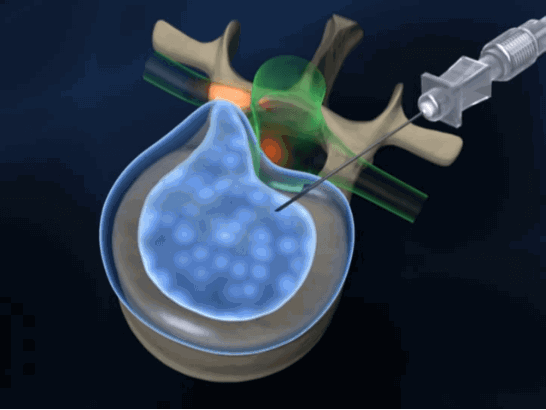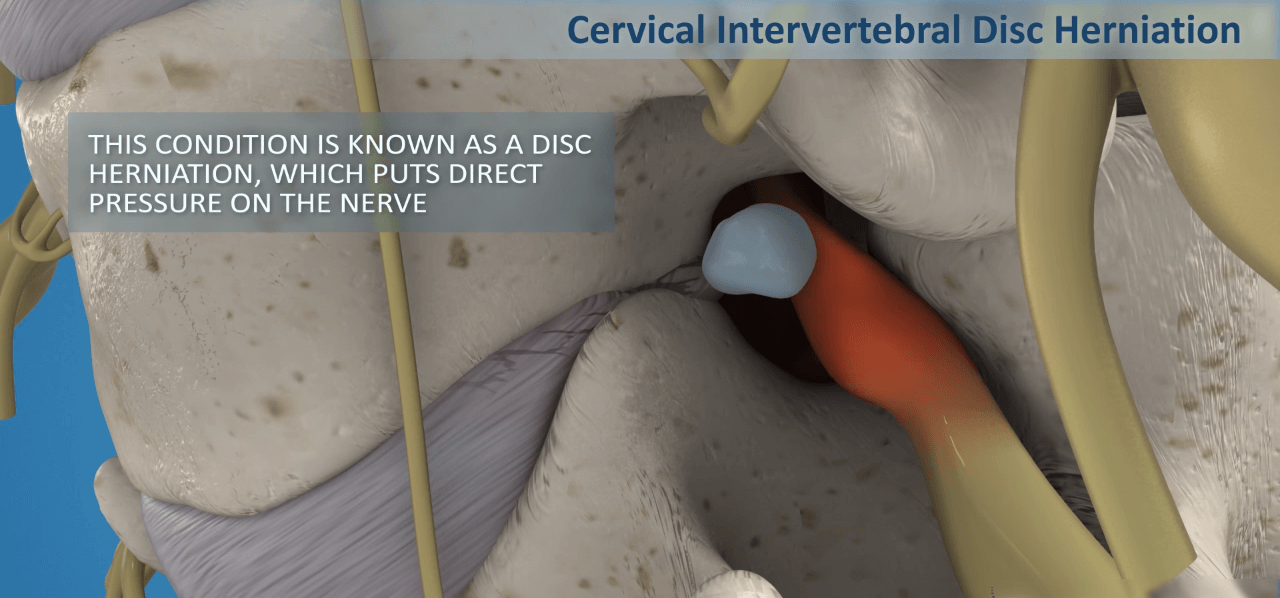Laser Surgery of the Spine

The application of lasers to medicine has grown exponentially since the 1980’s. Lasers have changed the field of Ophthalmology with the ability to permanently correct vision without the use of glasses, perform retinal surgery, and even cauterize bleeding blood vessels on the retina. But has laser surgery of the spine had a similar impact?
Lasers are really high intensity light that vary in their cutting power and penetrating ability (click here to see my post on Low Level Laser Therapy). Lasers can only effect what is directly in front of them (they cannot, for instance, curve around a corner) so that their surgical usage is limited by their physics.
Because a laser is applied as a medical therapy does not automatically make it superior to a more standard surgical technique (for instance, using a scalpel). Lasers generate heat which can effect other tissues that may be in close proximity to what is actually being operated on. They can create collateral damage from the heat they generate.
Many spine surgeons believe that laser surgery of the spine is really a marketing gimmick with its spinal applications hardly an advantage over other microsurgical techniques for the spine. One can understand their disdain when you consider that lasers are of no use when it comes to cutting bone or dealing with fragmented discs (2 situations where most spine surgeons would use a non-laser surgical technique to correct the problem).
Yet, and still, lasers do allow surgeons to operate in very tight spaces that are often not mechanically possible with instruments. After all, a laser can be directed through a very small glass filament to very tight areas.
So the controversy continues, leaving a patient to have to make a decision as to what is best for them. The remainder of my post will be to equip you with the information necessary to make the decision for yourself because…in the end…it’s up to you anyway.
What Actually Is Laser Surgery Of The Spine?

Laser surgery of the spine is really microsurgery using a laser instead of the more conventional small instruments used in microsurgery. It starts with an exceedingly small incision over the area of the spine where the surgeon will be operating.
The incision itself will usually be less than an inch long. Through that skin incision a cannula (surgical tube) is pushed through the incision in the skin to slide by muscles, ligaments, and tendons down to the spine. This avoids the surgical injury that occurs with the usual surgical dissection down to the operative area on the spine.
Surgical dissection adds to complications and healing time. Because the size of the cannula is small, the tissue slides around it rather than having to be surgically cut.
Due to the small area visualized with the naked eye, a very small magnifying camera is also inserted through the cannula. This camera “opens up” the field of view for the surgeon much the same way a magnifying glass would.
The surgeon is able to operate in an exceedingly small surgical field with the aid of the optics of the surgical camera. The magnified surgical field is projected onto a high resolution monitor. Surgeons trained in microsurgery understand the limitations of the optics (depth perception for one) and compensate for it cognitively.

The equipment used is specially designed to operate in a limited space. The laser can be very thin taking up very little space in the cannula. The beam of the laser literally “vaporizes” the tissue directly in front of it. The tissue with the highest amount of water content is the most sensitive to the effects of the laser.
The interior of the disc (the nucleus pulposus) has a very high water content, making it a very susceptible target for a laser. However, nerves, muscles, ligaments, and tendons also contain an appreciable amount of water so they too are susceptible to the effects of the laser.
Bone, on the other hand, has a relatively lower water content and does not “vaporize” like the other surrounding tissues. It does, however, heat up and can be injured by a laser causing later complications.
Judging by the small area the surgical cannula exposes, only small areas of the spine are operated on at a time. Other pathology of the spine, perhaps located at other levels of the spine, cannot be seen or operated upon.
So given the technical and anatomic limitations of laser surgery of the spine, what would be the reasons it may be preferred in some cases? For the answer to that question I give you a digital video by a well known expert on laser spinal surgery…Dr. Tony Mork.
What Are The Top 10 Reasons For Laser Surgery Of The Spine?
To answer that question, I have included a short video by Dr. Tony Mork, well known Orthopedic Spinal Surgeon:
When Is Laser Surgery Of The Spine Useful?
It would seem that the most useful application of laser surgery of the spine would be for single level uncomplicated disc herniations. The amount of visualization needed under such circumstances should be relatively small.
When Is Laser Surgery Of The Spine To Be Avoided?
The following situations would make laser surgery less than optimal:
- Complicated disc herniations with extrusion of a disc fragment and sequestration. In such cases the fragment may migrate and not be picked up with the small surgical field used in this type of microsurgery. It is not uncommon for the pre-operative MRI to not fully identify these types of lesions.
- Multi-level disc and vertebral disease is causing the symptoms.
- When the mechanism for the symptoms comes predominately from bone abnormalities.Remember that lasers do not vaporize bone.
- When the person having the procedure has an active medical disease (such as an infection or congestive heart failure).
- When the experience of the surgeon doing the procedure with the laser is questionable. The cheapest price for the procedure is not always the best. Furthermore, having the procedure done in a third world country may also be hazardous.
- When your insurance will not pay for the procedure. Though the FDA and Medicare have approved the procedure, the reimbursement to the surgeon through an insurance plan may not be sufficient and they may charge above and beyond what is approved.
- When you have conflicting recommendations from 2 or more spine surgeons regarding the type of procedure that would be best suited to relieve the particular type of spinal problem you have.
What Are The Complications Of Laser Surgery Of The Spine?
Though the complications of laser surgery of the spine are uncommon, the following complications may occur infrequently:
- The surgery may only give temporary relief. This is the most common “complication” of laser spinal surgery.
- Post-operative infection of the disc.
- Post-operative infection of the incision.
- Post-operative infection of the surrounding tissues.
- A thermal injury (burn) of nerves in close association to the location of the surgery.
- A thermal injury of adjacent muscle, tendons, bone, or disc.
- Post-operative Bleeding.
- An allergy to any of the medications, anesthesia, or radiographic contrast media used during the procedure or associated with it.
A Summary Video On Laser Surgery Of The Spine By Dr. Tony Mork:
Summary Comments
I have reviewed for you what lasers are, the mechanics of laser surgery of the spine, the top 10 reasons for choosing endoscopic spine surgery, the most useful application of laser spine surgery, when to avoid the procedure, and the most common complications of laser spine surgery.
It would seem that laser surgery of the spine needs to have more “head to head” studies with other procedural types to determine its real value over other forms of surgery.
Though the procedure is safe and effective when the patient is carefully chosen, I cannot recommend it as a first choice for spine surgery.
I hope you have enjoyed this monograph. If you have further questions, please comment. I would love to hear from you and will answer you promptly.
Wishing you joy and healing.





